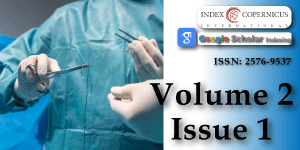The Essential Role of Esophagogastroduodenoscopy Prior to bariatric surgery
Main Article Content
Article Details
Copyright (c) 2018 Ebrahimi R, et al.

This work is licensed under a Creative Commons Attribution 4.0 International License.
Imam A, Harbi K, Rafael, Khoury Deeb, Buyeviz Victor, et al. Dieulafoy’s Lesion related massive Intraoperative Gastrointestinal Bleeding during single Anastomosis Gastric Bypass necessitating total Gastrectomy: A Case Report. Arch Surg Clin Res. 2017; 1: 051-055. Ref.: https://tinyurl.com/ydefga5a
D’Silva M, Bhasker AG, Kantharia NS, Lakdawala M. High-Percentage Pathological Findings in Obese Patients Suggest that Esophago-gastro-duodenoscopy Should Be Made Mandatory Prior to Bariatric Surgery. Obes Surg. 2018; 1-7. Ref.: https://tinyurl.com/y8mvvjqa
Goldis A, Lupusoru R, Lazar D. Clinical Features, Endoscopic Management and Outcome of Patients with Non-variceal Upper Digestive Bleeding by Dieulafoy Lesion. Biol Med. 2017; 9: 2. Ref.: https://tinyurl.com/y8ojetxl

